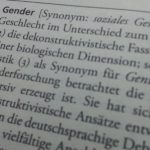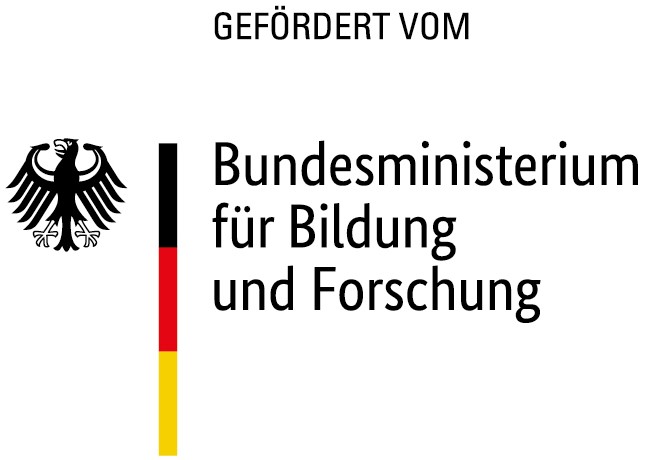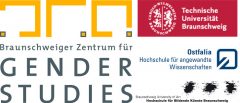
In the dialogue process, questions and points for discussion will be raised and answered here. In the process, terms such as gender dimension or the underlying understanding of inter- and transdisciplinary are also explained. This page will be updated in the course of the project and in line with the discussions.
Gender bias: What does it mean?
Gender dimension: What is it about?
Equality – gender studies: What is the difference?
Inter- and transdisciplinary: How are these terms used in the context of the IH2E project?
Additional work: To what extent does the integration of gender dimension entail additional work?
Gender bias
What does it mean?
A bias is when unconscious or conscious stereotypes and prejudices influence perception, action and behaviour. Accordingly, a gender bias arises from gender stereotypes and prejudices. These shape everyday life, communication and decisions as well as science—and thus also research.
More information on the term, including further literature, can be found at the CEWS – Center of Excellence Women and Science >>.
The European Commission elaborates on the topic in the explanatory video “The gender dimension in research”.
Gender dimension
What ist about?
Depending on the research context and topic, the relevance of gender varies, so that the gender dimension, i.e. the consideration of gender, must be determined specifically in each case. Following Londa Schiebinger, a distinction can be made between content-related, structural and cultural dimensions (cf. Paulitz 2012: 166) (DE).
>>read more<<
“In basic research, sex and gender dimensions and diversity dimensions can be a crucial factor in the planning and carrying out of research projects. This applies regardless of discipline and is equally true with respect to the transferability and later applicability or usability of results for different groups of people” (statement by the DFG 2020: 2).
In the development of materials and technologies or the analysis of chemical reactions and processes, such as the development of e-motors, gender does not usually have an effect at the level of knowledge, i.e. on the functioning of the e-motor in this particular example. The research field mentioned then has no content-related gender dimension. If gender inequalities exist with regard to the researchers and their working conditions, a structural and cultural gender dimension may nevertheless become important in the research project; the effect of gender on the structure and culture of the scientific disciplines involved must then be investigated in more detail (cf. DFG checklist). Content-related gender dimension becomes particularly relevant when humans or animals are part of the research or application (cf. ibid.), in the example above, this would be, among other things, in the product development and design of e-cars.
Sociology of science allows us to ask a) how the socially or culturally shaped understanding of gender influences science, b) how science itself contributes to the construction of this understanding of gender, and c) how resources in science are (in)equally distributed between the sexes (cf. Paulitz 2012).
| In its checklist, the German Research Foundation (DFG) requires concrete information when
– research is carried out on humans or animals – project results should be used for human subjects and/or animals or to be applied to them. – sex, gender and/or other diversity aspects of the researchers are relevant to the anticipated results. |
Paulitz, Tanja (2012): Geschlechter der Wissenschaft. In: Maasen, Sabine/ Kaiser, Mario/ Reinhart, Martin/ Sutter, Barbara (Hg.): Handbuch Wissenschaftssoziologie. Wiesbaden: Springer VS, S. 163-175 >>
Equality – gender studies
What is the difference?
Whereas equality or equal opportunities is a policy that asks who does research, gender studies is a scientific disciplinary field; it is about the question of what is being researched and how, and what significance gender dimension has for research. Gender studies can provide insights for successful policy.
>>read more<<
Equality is a (higher education) policy strategy. In relation to gender, its measures aim to ensure that disadvantaged or underrepresented groups participate in equal numbers in the world of work, politics, business, society, etc. Men and women – in the best case all genders – must be given equal opportunities throughout life – in private, professional and family life (cf. BMFSFJ, Topic Equality). This means, among other things, equal access to educational institutions and the labour market, equal participation in politics, the economy and society, equal pay for equal work and much more. It is important to identify mechanisms and regulations that lead to inequality and to counteract them. In this respect, it is also important to create framework conditions that ensure equal career opportunities.
In the context of higher education in relation to STEM disciplines, this means in particular using measures to arouse pupils‘ interest in STEM subjects, to attract prospective students, to increase the proportion of women at all levels and to keep junior researchers. At the same time, (unconsciously) gendered disciplinary cultures create barriers that cause and uphold structures of inequality. The MINT4TU box (DE) collects existing gender equality measures in the STEM field at TU Braunschweig.
Gender studies is a scientific discipline or a scientific disciplinary field. It is the theory-, method- and empirically-guided examination of the question of what significance gender has in all areas of human life. “The guiding assumption is that gender is complex. It is at the same time an individual experience, a category of social structure, a cultural-symbolic code, a bodily materiality, a dimension and effect of social practices, part of organisations and institutions, a literary narrative, etc.” (Chair of Professor Dr Paula-Irene Villa, read more here) (DE).
Like other disciplines, gender studies, also in the STEM disciplines, are heterogeneous when it comes to their concerns, cognitive interests as well as methodological and theoretical approaches. An insight into this heterogeneity is provided by the collection of material compiled as part of this project.
Separation or interconnection? It is important to understand the differences, as equality and gender studies are associated with different objectives and areas of activity: Equality as a policy and gender studies as part of research and teaching. Gender studies can also offer analyses on the basis of which policy can be pursued in a fact-based manner. Research on careers in the subjects of the Clusters of Excellence (EXC) and Collaborative Research Centres (SFB) is an example of gender studies in the SE2A cluster. SE2A gender equality measures introduced alongside are listed here.
This illustrates that gender studies—like any scientific discipline—primarily provides analyses and only secondarily allows for approaches in application. Gender studies in STEM provides analyses for the areas in which gender can be recognised and considered as an object in technology and natural sciences. This has the potential for STEM disciplines to become more attractive to new target groups at all levels of qualification due to complementary topics and changing disciplinary cultures (DE). This in turn also has a potential effect for greater participation of all genders in this scientific field. Further examples for the STEM disciplines are provided in the handout “Gender-Perspektiven in den Natur- und Technikwissenschaften” (gender perspectives in the natural and technical sciences, DE) as part of the project “Gendering MINT” (gendering STEM) at the University of Freiburg.
Mangelsdorf, Marion (2019): Handreichung Gendering MINT. Vernetzung und Austausch von Gender-Perspektiven in den Natur- und Technikwissenschaften. Universität Freiburg (zum pdf) (DE)
Inter- und transdisciplinarity
How are these terms used in the context of the IH2E project?
At TU Brauschweig it is understood that interdisciplinarity encompasses cooperation between two or more disciplines that jointly research a topic or subject. In transdisciplinary research, cooperation partners from business, society and politics are also involved.
>>read more<<
Following Mittelstraß (2013), the aim is: 1) to want to learn from each other 2) to develop interdisciplinary competences in a productive debate with other disciplines, 3) to reformulate one’s own approaches in the light of these and 4) to generate joint and not additive results. As a concept integrating perspectives from different disciplines, it requires not only better communication, but also time for the joint development of inter- and transdisciplinary competences and their application in the concrete research area.
In gender studies, research is carried out beyond the boundaries of the major academic cultures, i.e. between STEM disciplines and the humanities, cultural studies, social sciences and economics, and is more often referred to as transdisciplinarity or major interdisciplinarity.
Mittelstraß, Jürgen (2012): Transdisziplinarität. Oder: von der schwachsen zur starken Interdisziplinarität. In: Gegenworte, 28. Heft, S. 10-13 (zum pdf) (DE)
Additional work
To what extent does the integration of gender dimension entail additional work?
To penetrate gender dimension, to question one’s own knowledge, self-evident disciplinary assumptions and research routines, and finally to integrate perspectives from other disciplines into a joint research project by means of successful knowledge transfer, means additional work for researchers.
>>read more<<
Accordingly, the wrap-up of the panel discussion “Von Gender-Stereotypien, Nutzungskontexten und der Bedeutung einer gemeinsamen Sprache” (of gender stereotypes, contexts of use and the importance of a common language) states:
Genderdimensionen zu durchdringen, das eigene Wissen, die disziplinären Selbstverständlichkeiten und Forschungsroutine zu hinterfragen und schlussendlich über eine gelungene Übersetzungsarbeit Perspektiven anderer Disziplinen in eine gemeinsame Forschungsprojekt zu integrieren, bedeutet einen Mehraufwand für die Forschenden.
>>weiterlesen<<
Entsprechend wird in der Nachlese der Podiumsdiskussion „Von Gender-Stereotypien, Nutzungskontexten und der Bedeutung einer gemeinsamen Sprache“ festgehalten:
„Finding a common language and providing the necessary space for it in project design and implementation were named as key succes factors for interdisciplinary exchange. Each discipline has developed its own logic over a long period of time. It is therefore important to understand the other logic, but also to question one’s own. Allowing time for these important knowledge transfer efforts ultimately means additional work.“ (GenderAG 2012, p. 5, DE)
Funding institutions are increasingly requiring the inclusion of gender and diversity perspectives as a condition for eligibility. The integration of the gender dimension has long ceased to be purely pioneering work. This is shown by the vast number of publications and case studies that already include knowledge exchange in methods and logic of one’s own field of study (e.g. in Gendered Innovations or in Kilden’s brochure – further references under “Relevance Check” and “Material”). Nevertheless, time should be allocated during project planning for work in an interdisciplinary context and for engaging with new perspectives. A lively exchange should be cultivated throughout the project.
Support structures, such as those to be implemented within the IH2E project at TU Braunschweig, can identify needs and offer specific advice. In the long term, examining and recognising the gender dimension in research must be seen and implemented as a sustainable component of study and research in all areas, so that the broader perspective becomes a standard.

IH2E is a project of TU Braunschweig. Funding was raised in cooperation with the Braunschweig Centre for Gender Studies.


